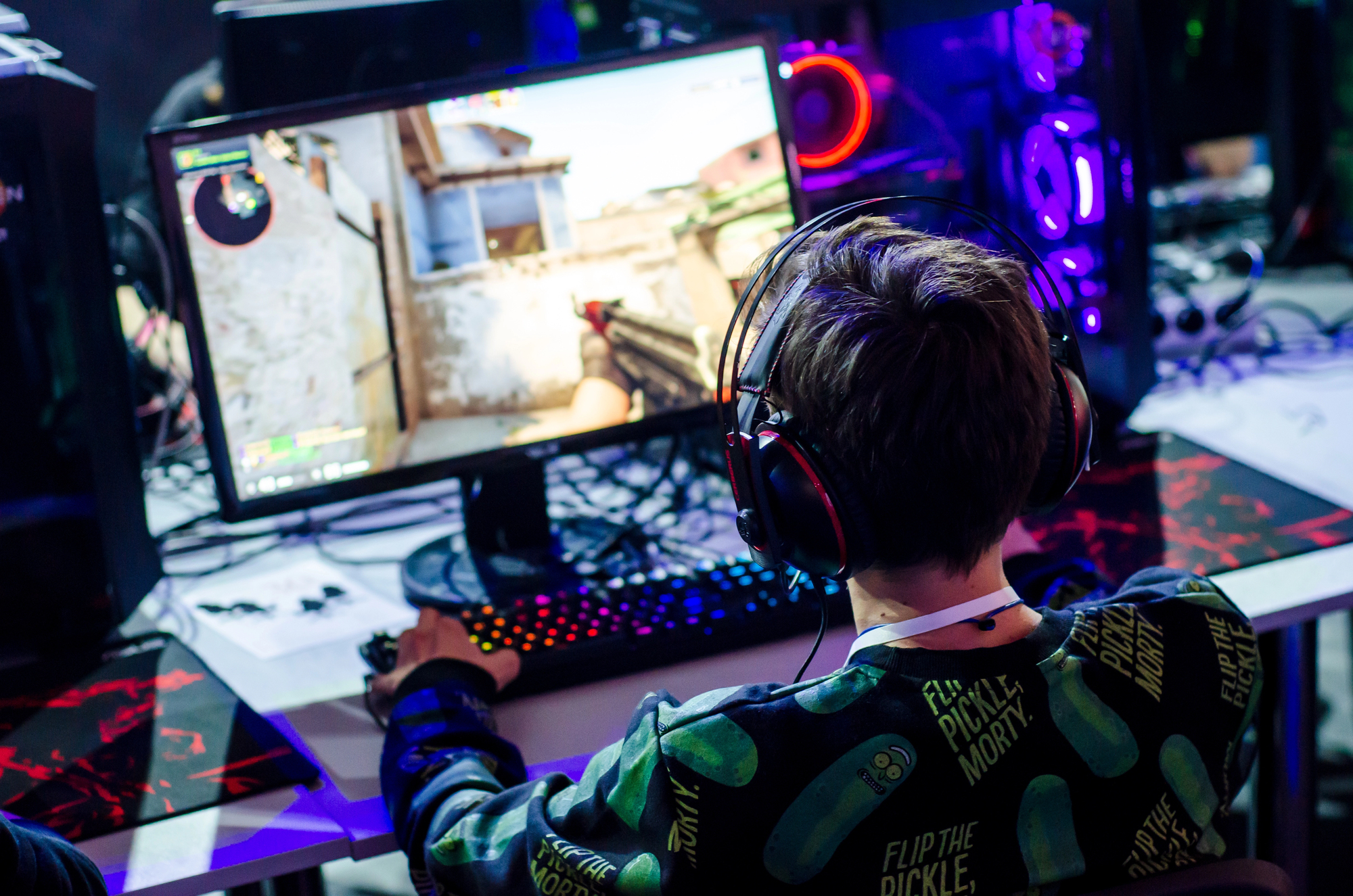

Gaming has become a driving force in technological innovation, pushing the boundaries of what’s possible in various fields. From artificial intelligence to virtual reality, the gaming industry consistently pioneers new technologies that find applications far beyond entertainment. These advancements often trickle down to other sectors, influencing the development of cutting-edge solutions in healthcare, education, and business.
The relationship between gaming and AI is particularly noteworthy. Game developers have long used AI to create challenging opponents and realistic non-player characters. This has led to significant improvements in machine learning algorithms, decision-making systems, and natural language processing. These technologies now power virtual assistants, autonomous vehicles, and predictive analytics tools used across industries.
Virtual and augmented reality technologies have also seen rapid progress thanks to the gaming industry’s demands. VR headsets and AR applications, initially developed for immersive gaming experiences, are now used in surgical training, architectural design, and remote collaboration. As these technologies continue to evolve, they promise to reshape how we interact with digital information and our physical surroundings.
The Role of Artificial Intelligence in Shaping Gaming
Artificial intelligence (AI) has become a transformative force in gaming, enhancing player experiences and revolutionizing game development processes. AI technologies are reshaping how games are created, played, and experienced across various aspects of the industry.
Evolution of AI in Gaming
Early AI in games focused on simple rule-based systems for non-player character (NPC) behaviors. As technology advanced, more sophisticated AI techniques emerged. Machine learning algorithms now allow games to adapt to player actions and preferences.
Recent developments include deep learning models that can generate realistic graphics, create dynamic game worlds, and even design entire levels. These AI-driven tools speed up development processes and allow for more expansive game environments.
The integration of natural language processing has also improved in-game dialogue systems, making NPC interactions more realistic and responsive to player inputs.
AI and Player Experience Enhancement
AI algorithms analyze player behavior to create personalized gaming experiences. This includes adjusting difficulty levels, recommending in-game activities, and tailoring content to individual preferences.
Adaptive AI opponents provide more challenging and engaging gameplay by learning from player strategies and adjusting their tactics accordingly. This keeps games fresh and exciting, even after multiple playthroughs.
AI-powered matchmaking systems in multiplayer games aim to create balanced and enjoyable online experiences by pairing players of similar skill levels.
AI in Non-Player Character Development
Modern NPCs utilize advanced AI to exhibit more lifelike behaviors and decision-making processes. They can react dynamically to player actions, remember past interactions, and display emotional responses.
Pathfinding algorithms have improved, allowing NPCs to navigate complex environments more realistically. This creates more immersive game worlds where characters move and behave in believable ways.
AI-driven dialogue systems enable more natural conversations with NPCs, featuring context-aware responses and the ability to maintain coherent long-term interactions.
Procedural Content Generation
AI algorithms generate vast amounts of game content, including landscapes, quests, and items. This approach creates diverse and expansive game worlds while reducing development time and costs.
Machine learning models can analyze existing game content to generate new assets that match the game’s style and quality standards. This assists artists and designers in creating consistent and varied game elements.
AI-powered procedural generation also enables the creation of infinite or highly replayable game experiences, where each playthrough offers new and unique content to explore.
Immersive Gaming: VR and AR Transforming the Industry
Virtual reality (VR) and augmented reality (AR) technologies are reshaping the gaming landscape, offering unprecedented levels of immersion and interactivity. These innovations are changing how games are developed, played, and experienced across various platforms.
Current State of VR and AR in Gaming
VR and AR gaming markets are expanding rapidly. In 2020, AR and VR generated $12 billion in revenue, with projections reaching $72.8 billion by 2024. Gaming accounts for 80% of all AR and VR revenue, highlighting its dominance in the field.
VR headsets like Oculus Rift, HTC Vive, and PlayStation VR have gained popularity among gamers. These devices create fully immersive 3D environments, allowing players to interact with virtual worlds as if they were physically present.
AR technology, often used on smartphones, overlays digital content onto the real world. This has led to the success of games like Pokémon GO, which blend virtual elements with physical surroundings.
Impact of VR and AR Technologies on Gaming Consoles
VR and AR are influencing the design and capabilities of gaming consoles. Sony’s PlayStation VR has sold millions of units, integrating VR directly into the PlayStation ecosystem.
Console manufacturers are investing in VR-compatible hardware and exclusive VR titles. This trend is likely to continue, with future consoles potentially featuring built-in VR capabilities.
AR features are also being incorporated into traditional console games, enhancing gameplay by using cameras and sensors to interact with the player’s environment.
Mobile Gaming and AR/VR
Smartphones have become a major platform for AR gaming. The widespread availability of AR-capable devices has made this technology accessible to a broad audience.
Mobile VR solutions, such as smartphone-based headsets, offer a more affordable entry point to VR gaming compared to dedicated VR systems.
AR games on mobile devices often use location-based features, encouraging physical movement and social interaction in the real world while playing.
The Metaverse and Immersive Worlds
The concept of the metaverse is gaining traction, with VR and AR technologies playing a central role in its development. These immersive worlds promise to blend gaming, social interaction, and digital economies.
Game engines like Unity are being used to create metaverse experiences, combining VR, AR, and traditional gaming elements into cohesive virtual spaces.
The metaverse could revolutionize multiplayer gaming, allowing for persistent online worlds where players can interact, trade, and participate in shared experiences across various platforms and devices.
As these technologies advance, the lines between gaming, social media, and virtual economies are likely to blur, creating new forms of digital entertainment and interaction.
The Intersection of Gaming and Future Technologies
Gaming and emerging technologies are intertwining to create innovative experiences and drive technological progress. This convergence is reshaping how games are developed, distributed, and played.
The Advent of Cloud Gaming
Cloud gaming allows players to stream games directly to their devices without needing powerful hardware. Services like Xbox Cloud Gaming and Google Stadia utilize remote servers to run games, which are then streamed to users’ devices. This technology eliminates the need for expensive gaming rigs and frequent hardware upgrades.
Cloud gaming offers instant access to a vast library of titles and enables seamless play across multiple devices. Players can start a game on their smartphone and continue on their TV or computer without losing progress.
The technology faces challenges like latency and bandwidth requirements. As internet infrastructure improves, these issues are expected to diminish, making cloud gaming more accessible to a broader audience.
Blockchain and Gaming: The Rise of Play-to-Earn
Blockchain technology is transforming gaming economics through play-to-earn models. These systems allow players to earn cryptocurrency or non-fungible tokens (NFTs) by participating in games.
Play-to-earn games give players ownership of in-game assets, which can be traded or sold on blockchain marketplaces. This model creates new revenue streams for players and developers alike.
Blockchain gaming faces hurdles such as scalability issues and environmental concerns related to energy consumption. As the technology matures, these challenges are being addressed through more efficient consensus mechanisms and layer-2 solutions.
5G Technology and Real-Time Game Streaming
The rollout of 5G networks is set to revolutionize mobile gaming and real-time game streaming. 5G’s high bandwidth and low latency enable smoother gameplay and reduce input lag for cloud gaming services.
This technology allows for more complex and graphically intensive games to be played on mobile devices. Multiplayer experiences also benefit from 5G’s improved connection stability and reduced latency.
5G also opens up possibilities for augmented reality (AR) gaming by supporting real-time data processing and location-based services. This could lead to more immersive and interactive mobile gaming experiences.
Interoperability and Cross-Platform Gaming
Cross-platform gaming is becoming increasingly common, allowing players on different devices to play together seamlessly. This trend is driven by advances in cloud technology and standardized development tools.
Interoperability extends beyond multiplayer functionality. Players can now transfer progress and in-game items between platforms, creating a unified gaming experience across devices.
Cross-platform play presents technical challenges, such as balancing gameplay across different input methods and hardware capabilities. Game developers are working on solutions to these issues to create fair and enjoyable experiences for all players.
Economic and Social Implications of Gaming
The gaming industry has become a major economic force, generating substantial revenue and influencing consumer behavior. It has also brought about significant social changes, particularly during the COVID-19 pandemic.
Gaming Industry and Revenue Generation
The global gaming market has experienced rapid growth, reaching $198 billion in 2020 with an 8% increase from the previous year. This expansion outpaced other media sectors, demonstrating the industry’s resilience and potential. Mobile gaming has been a key driver, creating jobs in game development, testing, marketing, and esports management.
In-app purchases, advertisements, and sponsorships contribute significantly to the industry’s economic impact. The U.S. video game industry alone added nearly $66 billion to the country’s GDP, with an employment multiplier of 3.36. This means that for every job created in the gaming sector, additional jobs are generated in related industries.
Average compensation in the video game industry stands at $168,000, varying across different sectors. This high pay scale attracts top talent and further stimulates economic growth in regions with strong gaming presences.
Advertising and Monetization in Games
Free-to-play games have become a dominant model in the industry, relying heavily on in-game purchases and advertising for revenue. This approach has proven highly effective, allowing games to reach a wider audience while still generating substantial income.
In-game advertising takes various forms, from banner ads to more integrated product placements. These strategies allow brands to reach engaged audiences in interactive environments. The effectiveness of such advertising has led to increased investment from companies outside the traditional gaming sphere.
Monetization strategies continue to evolve, with developers experimenting with new ways to generate revenue without alienating players. This includes cosmetic items, battle passes, and limited-time events that encourage spending while maintaining game balance.
Social Changes and Gaming During COVID-19
The COVID-19 pandemic accelerated existing trends in gaming, as people turned to games for entertainment and social connection during lockdowns. This period saw a surge in both casual and competitive gaming across all age groups.
Games became virtual social spaces, hosting concerts, movie screenings, and other events. This shift highlighted gaming’s potential as a platform for diverse forms of entertainment and social interaction beyond traditional gameplay.
The increased time spent gaming during the pandemic also raised awareness about issues such as gaming addiction and the need for balanced digital habits. It prompted discussions about the role of games in education and remote work, as the lines between leisure, learning, and productivity became increasingly blurred.










